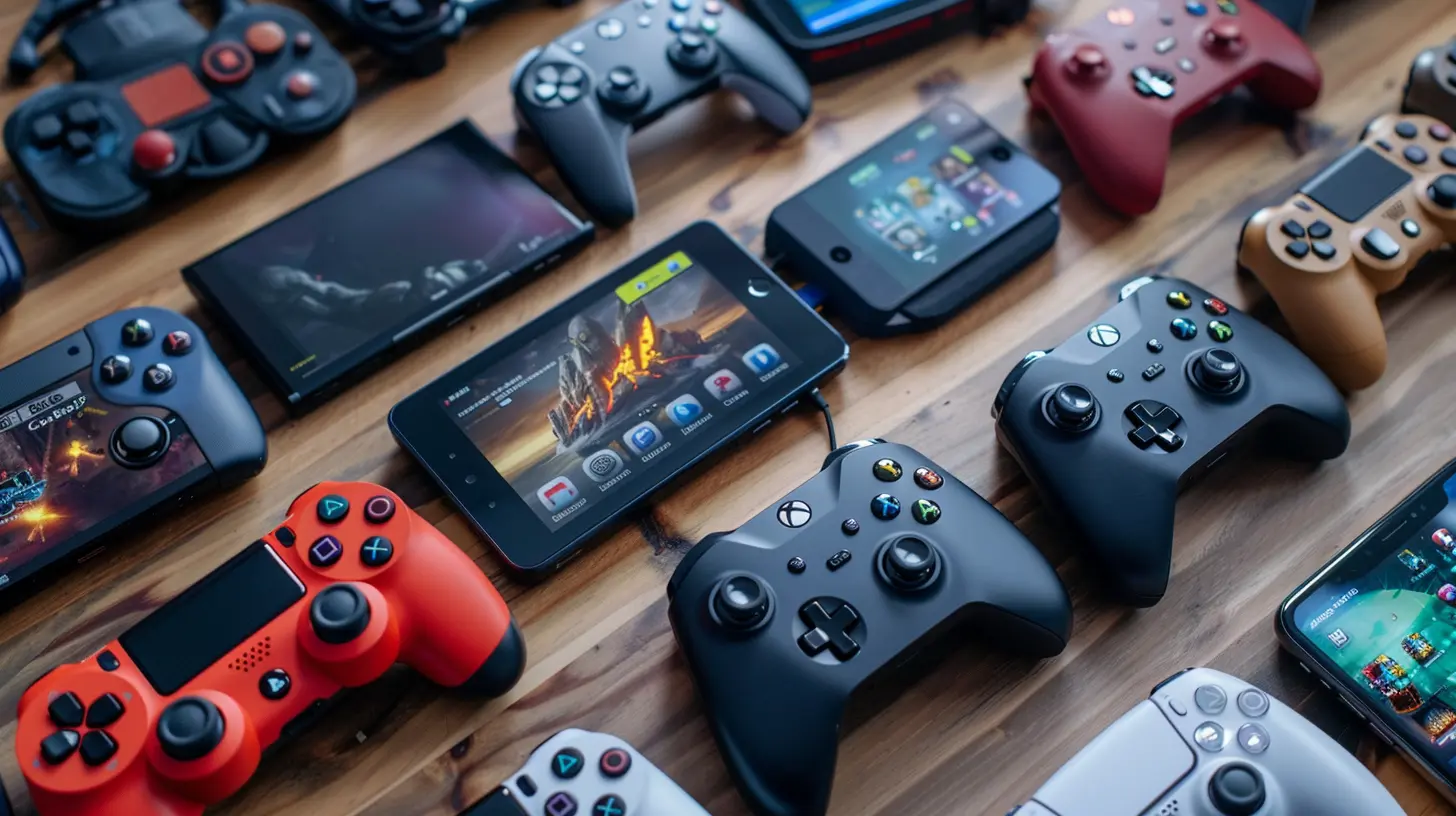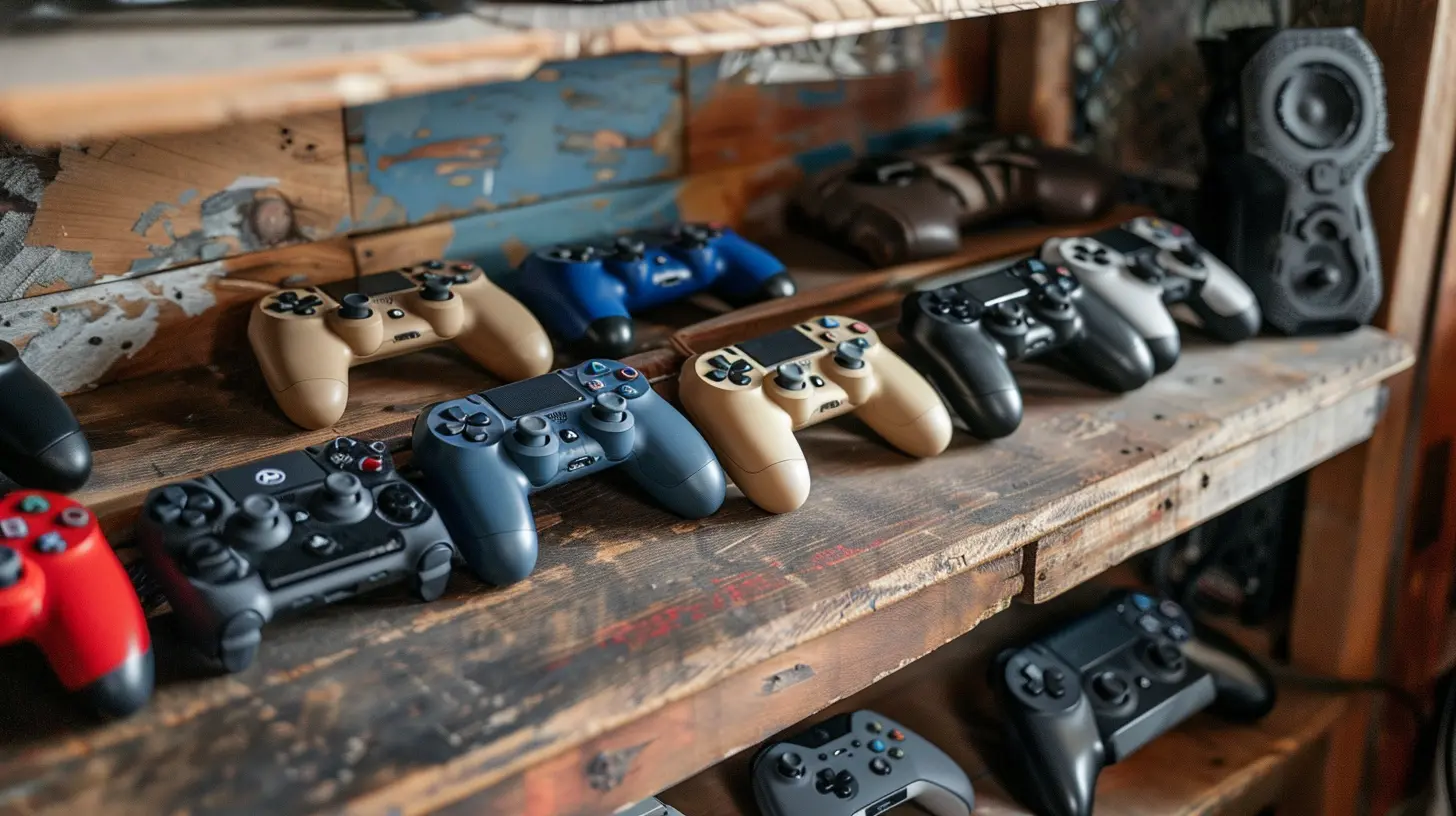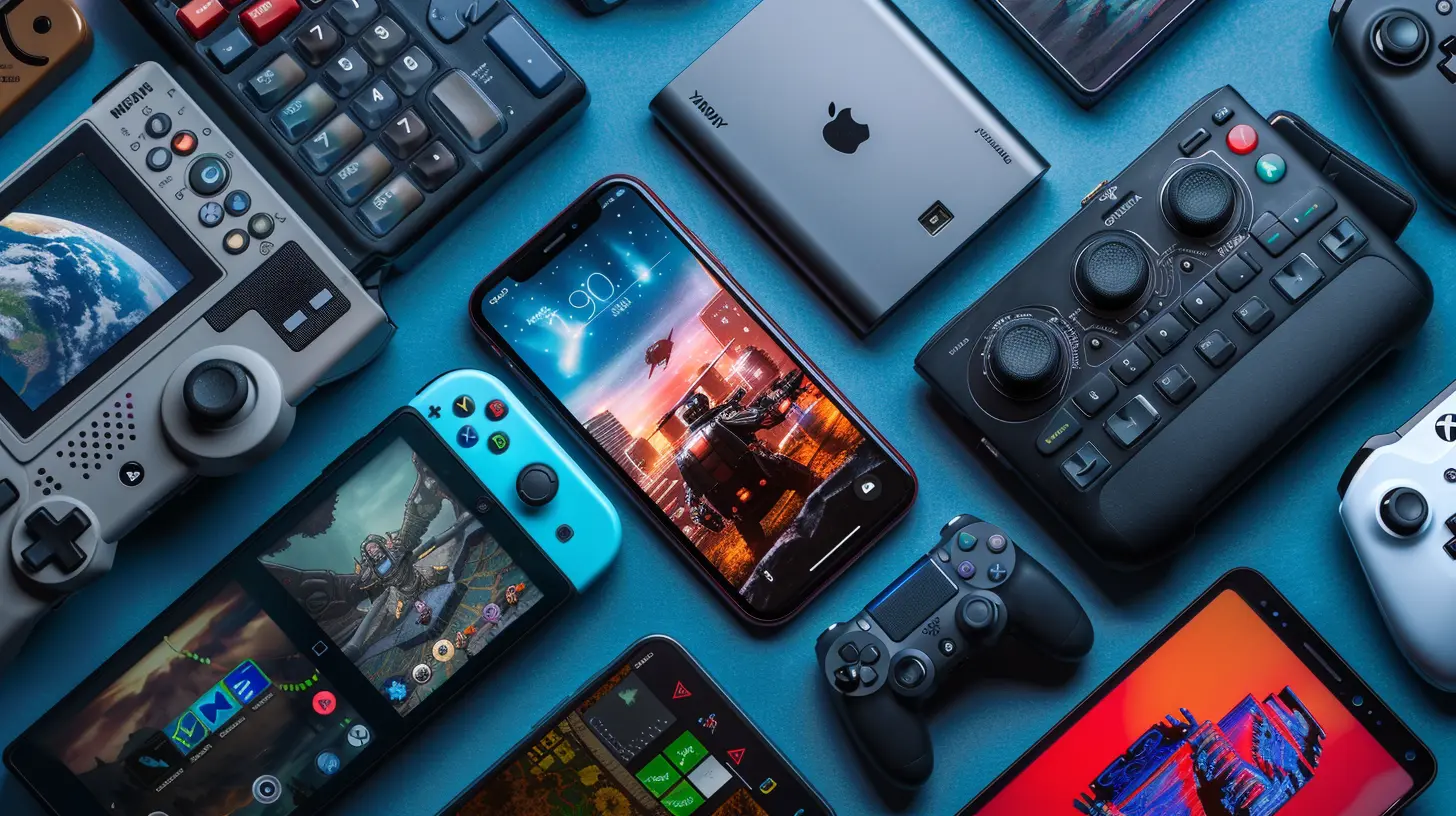How Mobile Platforms Are Competing with Traditional Consoles
1 September 2025
Alright, let’s talk about the elephant in the living room — or rather, the tiny rectangular beast that's constantly buzzing in your pocket. Yep, I’m talking about smartphones and tablets. We used to think of them as the sidekicks of the gaming world — a quick game of Candy Crush while you're waiting for your pizza. But fast forward to now, and they’re standing toe-to-toe with gaming behemoths like the PlayStation or Xbox. I know, blasphemy, right?
But before you throw your DualShock across the room in righteous nerd fury, let’s take a step back. Mobile platforms have been making some serious power moves lately, and it’s time we spill the tea on how they’re giving traditional consoles a run for their polygons.

The Not-So-Humble Beginnings of Mobile Gaming
Remember Snake on the Nokia 3310? That was peak mobile gaming… or so we thought. Fast forward a couple of decades, and now we’ve got mobile games with graphics that are legitimately insane, online multiplayer, cloud saves, and yeah — in-app purchases that cost more than your monthly burger budget.Mobile gaming has evolved from potato-quality graphics on a screen the size of a postage stamp to full-blown AAA experiences squeezed into your pocket. Thanks to iPhones, Androids, and other handheld horsepower machines, mobile gadgets have become legitimate gaming platforms. And we’re not talking Flappy Bird anymore.

The Console Kingdom: Once Unchallenged, Now Tweeting Nervously
Traditional consoles — the golden gods of gaming — had it easy. For years, they ruled the living room with iron joysticks. They boasted superior hardware, big-budget titles, and the good ol’ feeling of playing on a massive screen with a controller firmly gripped.But lately, they’ve been looking over their shoulder. The mobile gaming market isn’t just gaining ground — it’s snowballing like Sonic on a caffeine rush. With casual gamers outnumbering the hardcore ones and people craving games-on-the-go, mobile is becoming the gaming platform of the masses.

Graphics Smackdown: Consoles Still Shine, But Mobile’s Catching Up
Okay, let’s be real — graphically, consoles are still flexing those 4K muscles. Games like “The Last of Us Part II” or “God of War Ragnarok” are visual art pieces. You don’t get that level of beauty on a six-inch screen. Yet.But mobile devices aren’t exactly slouches anymore. Titles like “Genshin Impact” and “Call of Duty: Mobile” look shockingly good. And those games run on a phone. What's next? Crysis on a toaster?
And don’t even get me started on cloud streaming tech and 5G. Platforms like NVIDIA GeForce NOW and Xbox Cloud Gaming are letting phones run high-end console games without breaking a sweat. So yes, visuals might still tip in favor of consoles — for now — but mobile is building a gym membership and bulking up.

Controls: Thumbs vs. Thumbs AND Buttons
Look, touchscreen gaming is like playing darts with spaghetti — it works, but it’s messy. But then Bluetooth happened. Now you can hook up a controller to your phone and game like it’s 1999 (but with fewer wires and actual ergonomics). Backbone? Razer Kishi? These peripheral wizards turn your phone into a portable console faster than Mario can hit a coin block.Plus, devs are getting smarter with touch controls. Love it or hate it, mobile UIs are getting more intuitive. Tap to shoot, drag to move, auto-aim — sure, it’s a little "cheat-y", but hey, it works when you’re trying to game one-handed while holding your coffee in the other.
Game Catalog: Quantity vs. Quality?
Consoles definitely have their bread and butter — exclusive, cinematic, award-winning masterpieces that make you feel things (I'm looking at you, Ellie and Joel). Mobile, on the other hand, has a library so enormous it makes Netflix look like a pamphlet. But let’s be honest — it’s a bit of a mixed bag, quality-wise. For every “Monument Valley,” there are 3,000 clones of “Temple Run” or knockoff battle royales that look like someone designed them in Microsoft Paint.Still, mobile has range. From quick pick-up-and-play titles to full-length RPGs, the variety is mind-blowing. And it's all about accessibility. Not everyone wants to devote 60 hours and a blood pact to beat a single-player console saga. Sometimes, you just want to crush some candy — and mobile’s got you covered.
The Price Tag: Free* vs. $70+ misery
Let’s talk cash. Console games these days can cost as much as a fancy dinner for two. And remember, that doesn’t include the console, controllers, online subscriptions, or the therapy you need after losing in “Elden Ring.”Meanwhile, mobile gaming is like that friend who always brings snacks to the party — mostly free-to-play, with optional (and sometimes ridiculous) in-app purchases. Sure, some games guilt-trip you harder than your mom when you say no to DLC outfits, but at least you’re not forking out a Benjamin just to press "Start Game."
Social Gaming & Accessibility: Mobile FTW
Ever tried taking your PlayStation 5 to the beach? Yeah… don’t. Mobile platforms are everywhere. They win the portability game by a mile and have quietly turned phones into social hubs. Whether you're playing a word game with your grandma or rushing a squad with your high school buddies, mobile gaming connects people in ways consoles just can’t. It’s casual, fast, and social — three things your average console experience struggles with outside of Twitch streams and Discord chats.Plus, with accessibility features baked in (think colorblind modes, voice commands, and one-handed controls), mobile gaming is inclusive AF — something the traditional scene is still catching up to.
Monetization: A Friendly Wallet Tap or A Full-On Robbery?
Ah, the controversial topic. Traditional consoles sell you a game once… usually. And then microtransactions come knocking like that one aunt who always needs money. But mobile? Oh, mobile invented the art of emptying your wallet slowly and innocently. “Just $0.99 for more gems!” they say. Fast-forward three months, and you’ve refinanced your car.But hey, at least you had a good time. The advantage here? Mobile lets you choose your poison. You can be a totally free player (grind-life, baby) or drop money like you’re Jeff Bezos. It’s flexible — and weirdly addictive.
eSports & Streaming: Mobile’s Unexpected Glow-Up
Hold up — you thought mobile gaming was all casual? Tell that to the multi-million-dollar “Clash Royale” tournaments or “PUBG Mobile” championships filling stadiums with screaming fans.Mobile eSports is real, and it’s growing faster than a TikTok trend. With lower barriers to entry and a massive player base, more people are jumping in. Seriously, anybody with a decent phone can start competing. Try saying the same about a gaming PC with a GPU that costs more than your rent.
Streaming-wise, mobile games are trending on YouTube and Twitch like never before. Let’s not even talk about TikTok — where entire communities are forming around mobile titles, tips, tricks, and inevitably, rage quits.
Cross-Platform Play: Welcome to The Future
Today’s gaming world is weirdly beautiful. You can start a game on your console, continue it on your phone, then rage-quit on your tablet after losing your 12th match. Cross-play is becoming the new norm, and mobile is riding that wave hard.Games like “Fortnite,” “Minecraft,” and “Roblox” are bridging the gap, letting you play with friends across platforms. It’s like a digital United Nations, but with more dodging and teabagging.
Developer Support: Follow the Money, Honey
Here’s a fun fact: mobile games generate about half of the entire gaming industry’s revenue. HALF. So guess where the developers are going? That’s right. To mobile. Like moths to a well-lit app store.More studios are launching mobile-first titles, or making mobile ports of their console games. The logic? There’s just too much money — and way too many players — to ignore. And with Unity and Unreal Engine supporting mobile development like pros, the quality bar keeps rising.
The Verdict: Can Mobile Really Beat The Titans?
Alright, deep breath. Is mobile gaming going to replace consoles completely? Probably not. Some experiences are just better on a big screen, with surround sound and a vibrating controller in your hands. But is mobile gaming now a legit contender in the gaming world that can often out-flex traditional consoles in many ways? Oh, heck yes.We’re witnessing a shift where gaming is no longer tied to one device or one format. It’s democratized, bite-sized, binge-worthy, and literally in your back pocket.
So next time someone scoffs at your “little phone game,” remind them that mobile platforms already took over the world — they just didn’t send a press release.
Final Thoughts: Adapt or Don’t Bother
The truth is, gaming isn’t about hardware anymore. It’s about accessibility, convenience, and community. Mobile platforms are redefining what “gaming” even means — and if console makers want to stay in the race, they need to keep evolving.Like grandma’s rotary phone, traditional consoles are at risk of becoming quaint if they don’t keep up. Because mobile isn’t coming for the throne anymore... it's already sitting in it, sipping a frappuccino, and tweeting about it.
all images in this post were generated using AI tools
Category:
Gaming PlatformsAuthor:

Tayla Warner
Discussion
rate this article
1 comments
Asher Mendoza
Mobile's flexibility challenges consoles' rigid gaming experience.
September 1, 2025 at 4:28 PM

Tayla Warner
Absolutely, mobile platforms offer unparalleled flexibility, allowing gamers to enjoy immersive experiences anywhere, while consoles often require a fixed setup.


